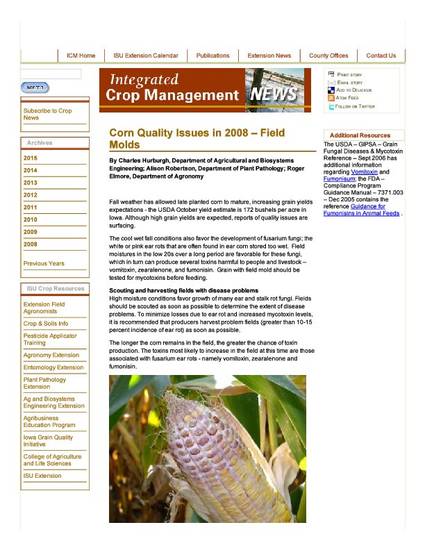
Article
Corn Quality Issues in 2008 – Field Molds
Integrated Crop Management News
Document Type
Article
Publication Date
10-24-2008
Disciplines
Abstract
Fall weather has allowed late planted corn to mature, increasing grain yields expectations - the USDA October yield estimate is 172 bushels per acre in Iowa. Although high grain yields are expected, reports of quality issues are surfacing. The cool wet fall conditions also favor the development of fusarium fungi; the white or pink ear rots that are often found in ear corn stored too wet. Field moistures in the low 20s over a long period are favorable for these fungi, which in turn can produce several toxins harmful to people and livestock – vomitoxin, zearalenone, and fumonisin. Grain with field mold should be tested for mycotoxins before feeding.
Copyright Owner
Iowa State University
Copyright Date
2008
Language
en
File Format
application/pdf
Citation Information
Charles R. Hurburgh, Alison E. Robertson and Roger W. Elmore. "Corn Quality Issues in 2008 – Field Molds" (2008) Available at: http://works.bepress.com/alison-robertson/38/
